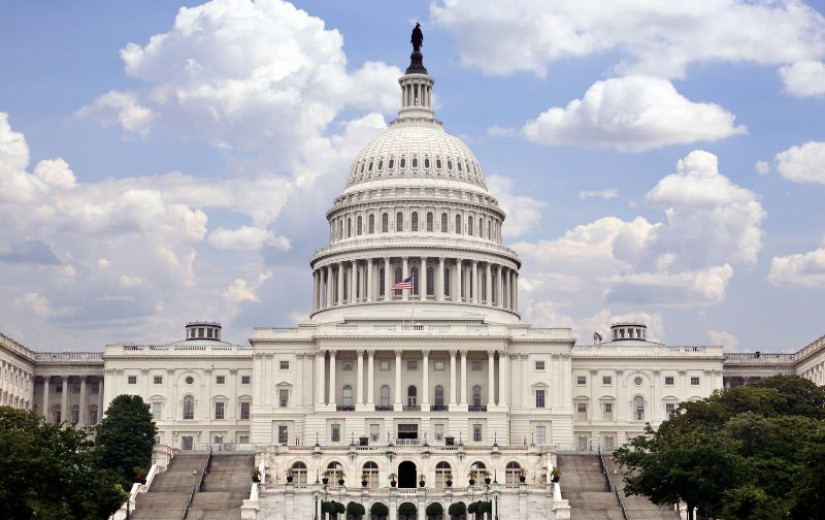

Sign up for the Slatest to get the most insightful analysis, criticism, and advice out there, delivered to your inbox daily.
On Tuesday, the Supreme Court cleared the way for President Donald Trump to purge transgender people from the military in a brief, unsigned order that did not bother to provide any reasoning. All three liberals dissented. With this decision, the Trump administration may now enforce a sweeping ban on military service, prohibiting the enlistment of transgender people and expelling those who are currently serving. The forced removal of these service members—who joined the military on the good-faith belief that the U.S. government welcomed their service—will mark one of the most sweeping acts of government-imposed bigotry in modern times. And the Supreme Court’s shameful, unexplained approval of the policy is certain to weaken the armed forces by pushing out thousands serving their nation honorably.
Tuesday’s order was not a surprise: Trump also attempted to outlaw transgender military service in his first term, and SCOTUS greenlit the prohibition by a 5–4 vote. The first-term ban, however, was a very different beast: It exempted current troops, allowing them to continue their service while receiving gender-affirming care. The policy as enacted therefore functioned as a ban on the enlistment of transgender people rather than an assault on those already serving. President Joe Biden promptly repealed the entire ban, but Trump reimposed and expanded it when he returned to office. This time, the prohibition covers all service members, not just potential enlistees. It cuts off their access to gender-affirming care. And it orders them to voluntarily separate from the military or face “involuntary separation”—a stain on their record that could deny them veterans’ benefits.
Trump’s first-term policy was cloaked in pretext, carefully crafted to avoid evincing overt contempt for trans people. His new policy, formally issued by Secretary of Defense Pete Hegseth, does not bother with such niceties. It states that being transgender is inconsistent with “an honorable, truthful, and disciplined lifestyle, even in one’s personal life,” and that trans identity is a “falsehood” that “is not consistent with the humility and selflessness required of a service member.” As U.S. District Judge Ana Reyes wrote when blocking the policy, this language is “soaked in animus” and “unabashedly demeaning,” an “unadulterated expression” of bigotry that “stigmatizes transgender persons as inherently unfit.” And the Supreme Court has consistently held that laws motivated by “animus,” or a “bare desire to harm a politically unpopular group,” are unconstitutional. Reyes is a Biden appointee. But U.S. District Judge Benjamin Settle, a George W. Bush appointee, also found the policy to be an unconstitutional affront to equal protection.
Now the high court has frozen Settle’s injunction, paving the way for Trump to implement the ban. (An appeals court already halted Reyes’ separate order.) It is especially galling that SCOTUS did not explain its rationale, given that Settle’s opinion—now on ice—constituted a diligent, top-to-bottom evisceration of the ban’s justifications; it deserved more than an unreasoned brush-off from the justices. For instance, the government asserted that transgender people drain resources through expensive health care; Settle noted that these costs are actually “a negligible fraction of the military budget.” Meanwhile, the cost of training replacements for discharged troops will reach an estimated $100 billion: “more than 100 times greater than the cost to provide transition-related healthcare.”
Nor is there any proof, as the government claims, that trans service members undermine military readiness. To the contrary, Settle wrote, there is extensive “evidence from a variety of service member declarants that these past four years of open transgender service helped, rather than hurt, unit cohesion, good order, and discipline.” Extensive testimony by military officials themselves demonstrates that allowing transgender service “fosters openness and trust among team members, thereby enhancing unit cohesion.” The government also asserted that the need for gender-affirming care makes trans troops “less deployable,” but Settle pointed to “persuasive data showing that there have not been deployability concerns” for these individuals. That evidence is not speculative: Transgender people have now been serving openly in the military for a decade—at higher rates than the cisgender population—and shown great bravery in uniform. If the problems alleged by the government existed, there would be documentation to support them. Such proof is entirely absent from the record.
For that reason, Settle concluded that the administration’s ban flunks any level of judicial review. The policy, he wrote, likely discriminates on the basis of sex—penalizing service members for failure to conform to their sex assigned at birth—triggering heightened scrutiny that the government’s flimsy excuses cannot satisfy. But even if he applied rational basis review out of “deference to military judgment,” the ban would remain unconstitutionally “irrational.” Settle also found that the policy violates due process by punishing trans troops “for conduct the government previously approved, offending basic notions of fairness.” It is difficult to quibble with any of these conclusions, each of which is rooted in the basic reality that there is no evidence to support the government’s claims. This policy is rooted in obvious hostility toward a vulnerable minority; its justifications are nothing more than post hoc window dressing.
So why did the Supreme Court let it take effect anyway? The most generous answer is that the conservative justices demand sweeping deference to the commander in chief, even when he acts out of undisguised bigotry. Perhaps their vision of a unitary executive includes a president who can discharge entire classes of minorities from the military—a view that would also authorize the return of racial segregation in the armed forces. (Hegseth has gone out of his way to purge racial diversity from the military’s top ranks.) These justices may also believe that the Constitution does not protect transgender people against sex-based discrimination, a position they previewed in recent arguments over bans on gender-affirming care.
Either way, before issuing an emergency order on the shadow docket, the court is supposed to consider not just the merits but the threat of irreparable harm to the parties. Here, transgender service members face the concrete threat of immediate harm. By contrast, the government was unable to put forth any plausible evidence that it is harmed by ongoing transgender service. SCOTUS ruled against the troops anyway. Their compelling interests were erased from the case.
As a result, thousands of transgender service members will be discharged from the military while litigation proceeds in the lower courts. People who volunteered to risk their lives for their country will be cruelly punished simply for who they are. People like Emily Shilling, the named plaintiff in this case—a transgender woman who has served as a naval aviator for 19 years, flown more than 60 combat missions, logged 1,750 flight hours in Navy jets, and earned three Air Medals. The Navy has spent $20 million training her. Soon, she will be forced out of service entirely. If the Supreme Court was going to condone this self-defeating act of invidious discrimination, the least it could have done was explain why.
Get the best of news and politics
Sign up for Slate’s evening newsletter.









